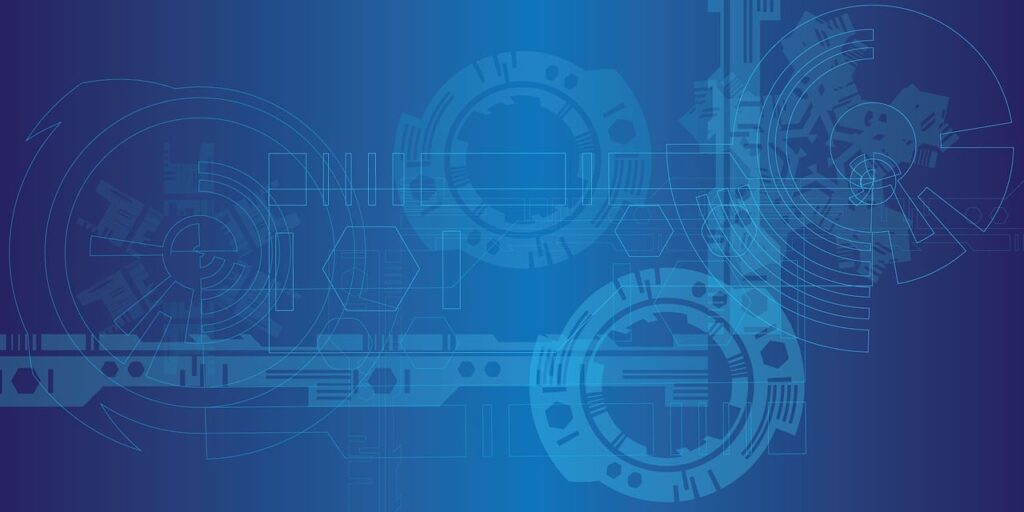Imagine a world in which computers have become an integral part of our lives, so seamlessly integrated that it’s hard to fathom a time when they didn’t exist. In just a century, our understanding and capabilities with technology have advanced, but what lies beyond our current achievements? The possibilities are endless and the future of computers holds both excitement and uncertainty. From mind-boggling advancements in AI to the evolution of wearable technology, get ready for a glimpse into a world where computers might just be as commonplace as breathing.
Hardware
Quantum computers
In the next 100 years, quantum computers are likely to revolutionize the field of computing. Unlike classical computers that use bits to store and process information, quantum computers use quantum bits, or qubits, which can exist in multiple states simultaneously. This parallel processing capability allows quantum computers to solve complex problems much faster than classical computers. These powerful machines have the potential to impact various fields, including cryptography, optimization, drug discovery, and artificial intelligence.
Neuromorphic computers
Neuromorphic computers, inspired by the human brain’s architecture and functionality, are another exciting development on the horizon. These computers aim to replicate the brain’s ability to efficiently process and analyze large amounts of data in parallel. By leveraging neuromorphic computing, we can expect significant advancements in areas such as image and speech recognition, natural language processing, and cognitive computing.
Bio-computers
Bio-computers represent an emerging field that merges biotechnology and computer science. These computers utilize living cells, such as DNA strands or proteins, to store and process information. Bio-computers have the potential to revolutionize fields like healthcare, diagnostics, and synthetic biology. In 100 years, we may witness the integration of bio-computers with human bodies, allowing for seamless interactions and new levels of personalization.
Software
Artificial Intelligence
Artificial Intelligence (AI) is already transforming our lives today, but its potential will only grow exponentially in the next century. AI algorithms, combined with the processing power of advanced computers, will enable machines to learn, reason, and make decisions independently. With advancements in AI, we can expect smarter virtual assistants, autonomous vehicles, personalized medicine, and tailored user experiences across various industries.
Virtual Reality
Virtual Reality (VR) has come a long way, but its true potential is yet to be fully realized. In the next 100 years, we can expect VR to become more immersive, realistic, and accessible. It will change the way we interact with computers by creating artificial worlds that simulate real-life experiences. VR will reshape industries like entertainment, gaming, education, and even remote work, enabling us to be virtually present in any location.
Augmented Reality
Augmented Reality (AR) offers a unique blend of the physical and digital worlds. In the coming century, AR will likely become seamlessly integrated into our daily lives. Imagine walking down the street and instantly getting relevant information about your surroundings or being able to virtually try on clothes before making a purchase. AR has the potential to enhance fields like manufacturing, healthcare, education, and tourism, making our experiences more interactive and informative.

This image is property of pixabay.com.
Human-Computer Interaction
Brain-computer interfaces
Brain-computer interfaces (BCIs) have already made significant progress in enabling direct communication between the brain and external devices. In the next 100 years, BCIs will likely become more sophisticated, allowing for seamless interaction between humans and computers. Imagine controlling your computer, smartphone, or any electronic device with your thoughts alone. BCIs may also unlock astonishing potentials in fields like neurorehabilitation, enabling people with disabilities to regain movement and independence.
Gesture-based interfaces
Gesture-based interfaces have gained popularity with technologies like Microsoft’s Kinect and touchless control in smartphones. As technology progresses, gesture-based interfaces will become more refined, accurate, and widely adopted. Interacting with computers through intuitive gestures will become second nature, eliminating the need for physical input devices. This advancement will have applications ranging from gaming and entertainment to industrial control systems and healthcare.
Voice recognition
Voice recognition technology has already transformed how we interact with our devices through the likes of voice assistants such as Siri and Alexa. However, in the next century, voice recognition will become even more advanced, accurately understanding and responding to natural language conversations. We can expect voice-controlled interfaces to be integrated seamlessly into our everyday lives, enhancing productivity, convenience, and accessibility.
Connectivity
Global internet coverage
In 100 years, global internet coverage will likely be a reality, connecting people in even the most remote parts of the world. Advances in satellite technology, mobile networks, and communication infrastructure will ensure that everyone has access to the internet, enabling unprecedented opportunities for education, entrepreneurship, and collaboration on a global scale.
Faster data transfer speeds
The need for faster data transfer speeds will only grow as our reliance on technology increases. In the next century, we can expect massive improvements in data transfer rates, enabling near-instantaneous transmission of large volumes of data. This will revolutionize industries such as healthcare, finance, and research, where real-time information exchange is critical.
Wireless charging
Wireless charging is already becoming mainstream, with devices like smartphones and wearables adopting the technology. In the next century, wireless charging will become even more prevalent and efficient, eliminating the need for wired connections to power our devices. Imagine a world where you can charge your laptop, car, or even entire homes wirelessly, bringing convenience, flexibility, and a greener approach to energy consumption.

This image is property of pixabay.com.
Security and Privacy
Quantum-resistant encryption
As quantum computers become more powerful, they also pose a threat to our current encryption methods. In the next century, quantum-resistant encryption algorithms will be developed to safeguard our data from quantum attacks. These algorithms will protect sensitive information, such as financial records, medical data, and personal identities, ensuring privacy and security in an increasingly interconnected world.
Biometric authentication
Biometric authentication methods, such as fingerprint and facial recognition, are already widely used today. However, in the next 100 years, we can expect advancements in biometrics that go beyond these traditional methods. Technologies like retina scanners, voiceprints, and even brainwave patterns may become common forms of authentication, providing more secure and unique identifiers to protect our digital identities and physical belongings.
Privacy-preserving algorithms
Preserving privacy while leveraging the power of data analytics will be a key challenge in the future. Privacy-preserving algorithms will enable individuals to share their data while keeping sensitive information confidential. These algorithms will strike a balance between extracting valuable insights from large datasets while respecting individual privacy rights, leading to innovations in various domains, including healthcare, finance, and social sciences.
Energy Efficiency
Low-power consumption
Energy efficiency will continue to be a top priority in computing. In the next 100 years, computers will be designed to consume minimal power while delivering exceptional performance. Advancements in nanotechnology, novel materials, and innovative cooling systems will contribute to energy-efficient computing, reducing our carbon footprint and prolonging battery life in portable devices.
Self-powering computers
In the future, self-powering computers may become a reality. These computers harness energy from their environment, utilizing technologies like solar panels, kinetic energy harvesters, or even biological processes. Imagine never having to worry about charging your devices again. Self-powering computers will revolutionize how we use technology, enabling us to be constantly connected without the constraints of traditional power sources.
Energy harvesting
Energy harvesting techniques will play a significant role in ensuring sustainable computing. Harvesting and utilizing ambient energy sources, such as light, heat, or vibrations, will power our devices, reducing our dependence on traditional energy sources. This approach will not only contribute to environmental conservation but also enable the deployment of computing solutions in remote and off-grid locations.

This image is property of pixabay.com.
Form Factors
Flexible and foldable displays
In the next century, displays will no longer be confined to rigid rectangles. Flexible and foldable displays will become the norm, allowing for portable devices that can be folded or rolled up. This innovation will revolutionize the design and functionality of smartphones, tablets, wearables, and even larger displays in areas like entertainment and advertising.
Implantable computers
Implantable computers offer a futuristic vision where computing power is seamlessly integrated with our bodies. These devices could be implanted to monitor health conditions, enhance cognitive abilities, or enable direct brain-computer interfaces. While ethical considerations and privacy concerns will undoubtedly arise, implantable computers have the potential to improve the quality of life for individuals with disabilities and revolutionize healthcare diagnostics and treatments.
Invisible computing
Invisible computing envisions a world where computing technology disappears seamlessly into our surroundings. From smart homes to smart cities, technology will be embedded in our environment, making it indistinguishable from everyday objects. Sensors, actuators, and computational power will be seamlessly integrated into our surroundings to provide intelligent and personalized experiences without the need for visible devices.
Data Storage
DNA data storage
The capacity to store and retrieve vast amounts of data will continue to grow in the next century. DNA data storage presents a promising solution that leverages the incredible information density and durability of DNA molecules. Storing data in DNA offers the potential for long-term archival storage that can withstand extreme conditions, making it ideal for preserving valuable information throughout generations.
Quantum data storage
Quantum data storage allows for the storage and retrieval of information using quantum systems. By exploiting the principles of quantum mechanics, this approach promises enhanced data storage capacity and security. Quantum data storage may become a viable option for storing and processing massive amounts of data, enabling new applications in fields such as finance, cryptography, and scientific simulations.
Terahertz storage
Terahertz storage is an emerging technology that utilizes terahertz electromagnetic waves to store and retrieve data. Compared to current storage mediums, terahertz storage offers significantly higher data transfer rates, allowing for faster access to information. This technology may enable the next generation of 3D storage, holographic memory, and ultra-high-density data storage solutions.

Medical Applications
Personalized medicine
Advancements in computing and data analytics will pave the way for personalized medicine. In the next century, computers will analyze vast amounts of patient data, including genetic information, medical history, and lifestyle factors, to tailor treatment plans specifically to each individual. This approach will lead to more accurate diagnoses, effective therapies, and improved patient outcomes, revolutionizing healthcare as we know it today.
Medical diagnosis and treatment
In 100 years, computers will play an even more integral role in medical diagnosis and treatment. The combination of advanced algorithms, artificial intelligence, and improved sensor technologies will enable precise and real-time diagnoses. Computers will assist doctors in interpreting medical images, analyzing biomarkers, and predicting disease progression. Furthermore, treatments will be optimized using computational modeling and simulation, ensuring the best possible outcomes for patients.
Neural interfaces for disabilities
Technological advancements in neural interfaces will profoundly impact individuals with disabilities. In the future, we can expect the development of sophisticated brain-computer interfaces that allow individuals to control external devices using their thoughts alone. These interfaces will give people with disabilities increased independence, mobility, and communication capabilities. Integrating computers with the human brain will open up a whole new world of possibilities for those living with disabilities.
Conclusion
Computers in 100 years will be unrecognizable compared to the devices we use today. From quantum and neuromorphic computers to biocomputers and advanced AI, the hardware will be exponentially more powerful and capable. Software innovations like virtual reality, augmented reality, and advanced human-computer interaction will create immersive and personalized experiences. Connectivity will be ubiquitous, with global internet coverage and lightning-fast data transfer speeds. Security, privacy, and energy efficiency will be of utmost importance, with quantum-resistant encryption and self-powering computers leading the way. Form factors will evolve, with flexible displays, implantable computers, and invisible computing transforming the way we perceive technology. Data storage will reach new heights, with DNA and quantum data storage enabling massive amounts of information to be stored securely. In the medical field, computers will revolutionize personalized medicine, diagnosis, and treatment, while neural interfaces will empower individuals with disabilities. The future of computing holds immense potential for advancements that will reshape society and enhance our lives in ways we can only imagine.

